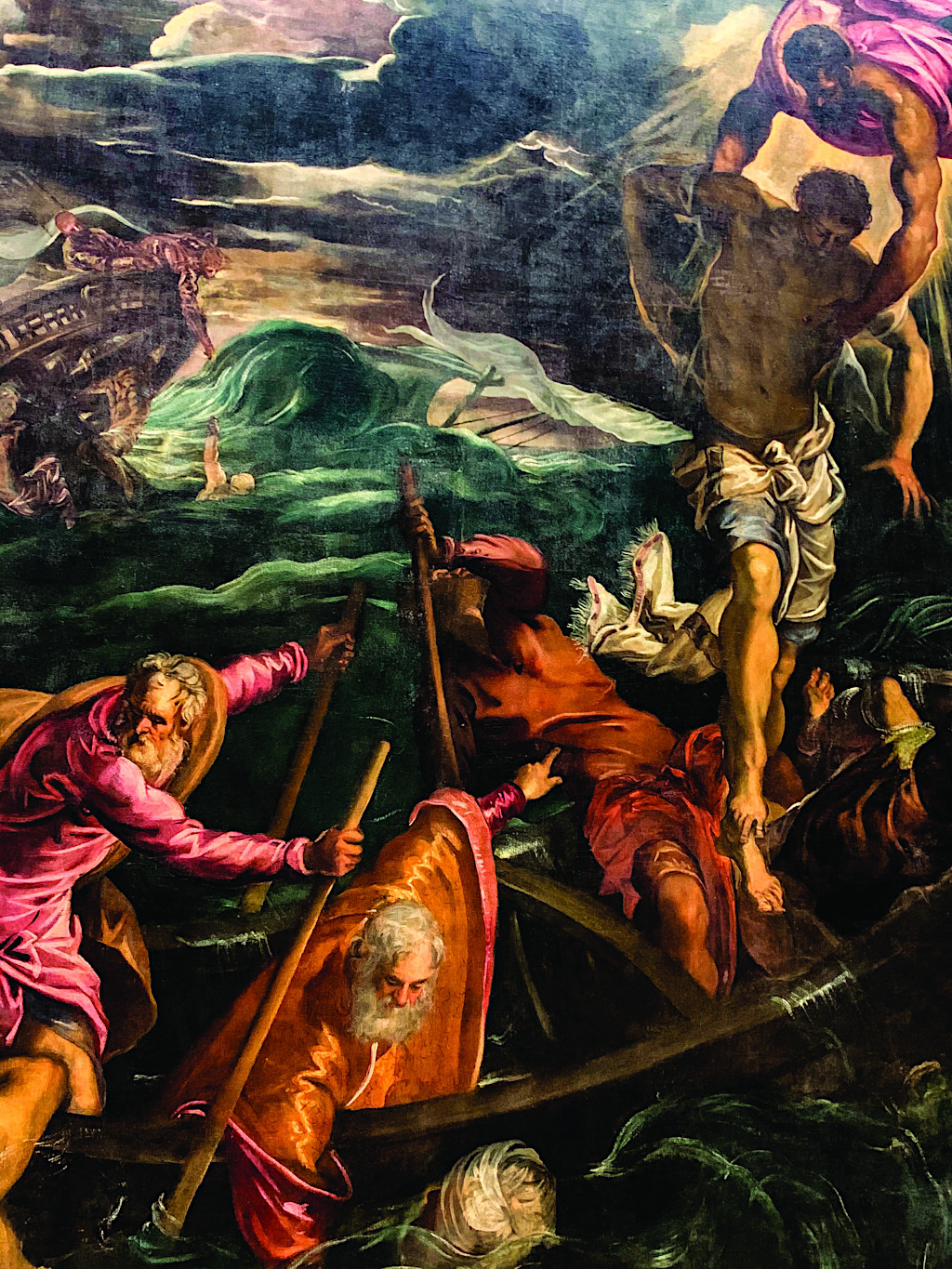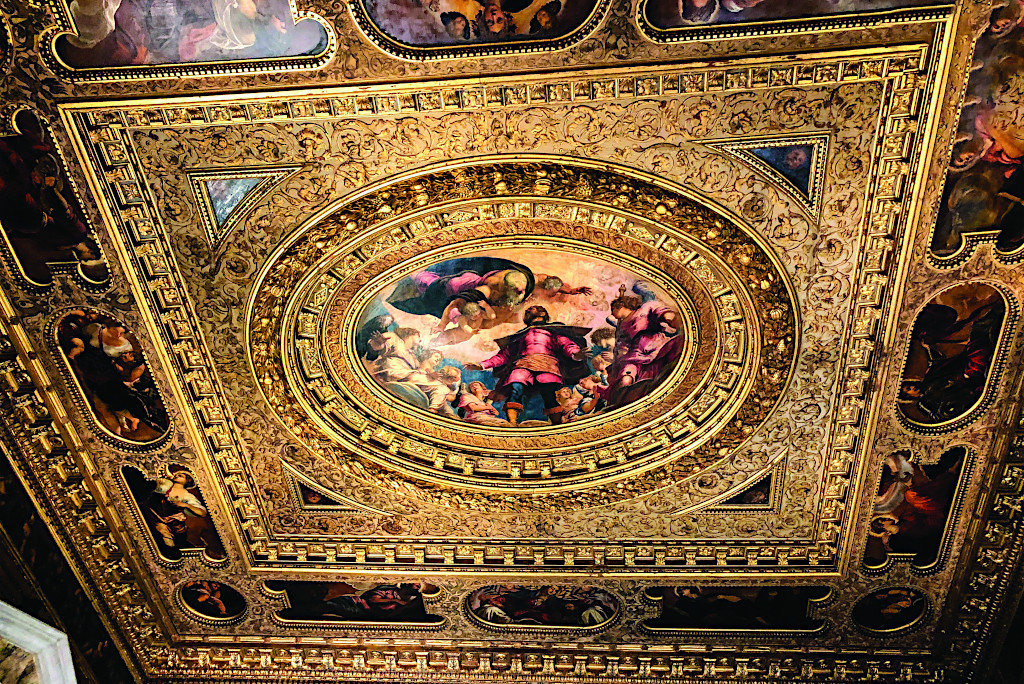Part of this trip to Venice was to celebrate the 400th anniversary of the birth of artist Tintoretto and to discover the best of his paintings throughout the city. If Verdi is Venice’s master musician then Tintoretto is its prized local artist. Born in 1518, Jacopo Robusti was 1 of 21 children. His father was a dyer, which is tintore in Italian, and Jacopo worked with his father garnering the nickname, Tintoretto (little dyer). At the age of 12 years old, he became an apprentice in Titian’s workshop. Titian at the time was the master painter of Venice and renowned for his vivid use of color. Even though he was very young, Titian felt threatened by Tintoretto’s innate talent and fired him from his studio, creating a lifelong feud and competition between them. As much as Tintoretto was frustrated by Titian’s constant blocking him of winning competitions and earning money, Tintoretto respected his short-lived former mentor and developed this motto towards his work: “The drawing of Michelangelo, the coloring of Titian…”
That day we aimlessly explored Venice from our neighborhood of the Dorsoduro, north towards the San Polo district and, without looking at a map, and just by chance, we ended up in front of the Church of San Rocco, also known as Church of Saint Roch.

St Mark Saving a Saracen from Ship Wreck by Tintoretto
Photo: Arthur Wooten
One of 4 plague churches, it was built for the Confraternity (a society of wealthy and religious Venetian men) of San Rocco between 1489 and 1508, to honor and help the victims of the plague. In fact, Saint Roch dedicated his life to helping those suffering from the Black Death.
Next to the church on one side was a new da Vinci museum, and on the other is the actual Scuola Grande di San Rocco, home of the Confraternity. I knew the Scuola housed scores of Tintorettos, but when we approached the building someone inside was closing and locking the doors earlier than their website indicated. Disappointed, we stepped into the church. What an unexpected surprise. The church was a jewel box of sumptuous paintings mounted on the walls, surrounding the alter, covering the balconies and even up on the ceiling. The artists included Angeli, Ricci, and Fumiani, as well as 6 paintings created by Tintoretto. Still an active church, we were courteous of worshipers praying as we tip-toed around the church admiring the masterpieces. One that stood out for me was Tintoretto’s painting Christ Healing the Paralytic (Pool of Bethesda). Here was a beautiful example of the artist honoring Michelangelo in his depiction of massive and muscular male figures as well as applying the rich and vivid colors, like Titian.
Also amazing were the paintings of The Vows of the Doge and Patriarch’s Wish to St Roch, both done by Giuseppe Angeli that were up in the balcony. From below, they were hauntingly observing us.
Having spent more time than expected in Saint Roch’s, we headed out and were shocked back into reality as we scurried home retracing our steps as water levels began to rise and the sun was setting. This was way too early for the tidal waters which primarily begin about 3 hours prior to high tide, which was scheduled for 11:30-ish in the evening. Plus, we noticed water bubbling up from the centuries old stone grate drains along the walkways, something I had never seen before.

San Rocco in Glory by Tintoretto (Scuola Grande di San Rocco)
Photo: Bernard Santora
After a shower, change of clothes, and with our stomachs growling, we decided not to take any chances and we ducked into a trattoria directly across the street from our ancient attic. Pane Vino San Barnaba turned out to be fantastic, not only for its food and ambience but because of the host and head waiter, Massimo. We devoured our food and drink, and then happily walked across the calle (narrow street) to our house. It was so enjoyable that we returned twice more during our visit.


